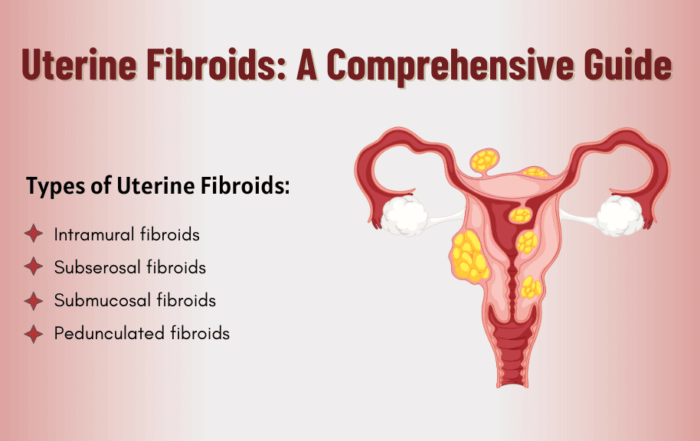
What is Uterine Fibroids?
Uterine fibroids, also known as leiomyomas or myomas, are noncancerous growths that develop within the walls of the uterus. These benign tumors are quite common, affecting many women during their reproductive years. While the exact cause of fibroids remains unclear, factors such as hormonal imbalances, genetic predisposition, and estrogen levels are believed to contribute to their formation.
Fibroids, while usually benign, can significantly impact a woman’s quality of life, and seeking medical advice from the IVF Center in Bengaluru for appropriate management and treatment options is crucial to alleviate symptoms and prevent complications.
Symptoms of Uterine Fibroids:
Uterine fibroids can manifest with various symptoms, and their severity can vary among individuals. Some common symptoms include:
1. Heavy menstrual bleeding: Experiencing prolonged or heavy periods that may include the passing of blood clots.
2. Pelvic pain and pressure: Feeling discomfort or pain in the pelvic region, often accompanied by a sense of fullness or pressure.
3. Backache or leg pains: Fibroids pressing on nerves in the lower back or pelvic area may cause backaches or leg pains.
7. Pain during sexual intercourse: Depending on the size and location of the fibroids, discomfort or pain during sexual activity can occur.
8. Reproductive issues: Fibroids might lead to infertility, recurrent miscarriages, or complications during pregnancy or labor, though this isn’t always the case.
It’s important to note that some women with uterine fibroids may experience no symptoms at all, while others might face multiple challenges.
Types of Uterine Fibroids:
Uterine fibroids can be categorized based on their location within the uterus. The various types include:
1. Intramural fibroids: These are the most common type and develop within the muscular wall of the uterus. They can cause the uterus to enlarge and lead to symptoms like heavy menstrual bleeding, pelvic pain, and pressure.
2. Subserosal fibroids: These grow on the outer wall of the uterus and may protrude outward, potentially causing pressure on surrounding organs, leading to pelvic pain or discomfort.
3. Submucosal fibroids: These fibroids develop just beneath the lining of the uterine cavity and can cause heavy menstrual bleeding, as well as fertility issues or complications during pregnancy.
4. Pedunculated fibroids: These fibroids grow on a stalk, either within the uterus or on the outer surface, and can be subserosal or submucosal in nature. They may cause pain if they twist on their stalk or, if large, press on nearby organs.
Cause of Uterine Fibroids:
The exact cause of uterine fibroids remains uncertain, but several factors are believed to contribute to their development:
1. Hormonal imbalances: Estrogen and progesterone, hormones that regulate the menstrual cycle, seem to play a role in fibroid growth. Fibroids contain more estrogen and progesterone receptors than normal uterine muscle cells, suggesting their growth is influenced by these hormones.
2. Genetic predisposition: Family history can increase the likelihood of developing fibroids. If a woman’s mother, sister, or grandmother has had fibroids, her risk may be higher.
3. Estrogen levels: During reproductive years when estrogen levels are higher, fibroids tend to grow. They often shrink after menopause when estrogen levels decrease.
4. Other growth factors: Other substances within the body, like insulin-like growth factor, may also affect fibroid growth.
5. Uterine tissue changes: Abnormalities in the uterine wall, such as changes in the muscle or tissue cells, may contribute to the development of fibroids.
Management of Uterine Fibroids:
Uterine Fibroids Treatment options may include-
1. Watchful waiting: If fibroids are small and asymptomatic, periodic monitoring by a healthcare provider without immediate intervention might be recommended.
2. Medications: Hormonal medications like birth control pills or intrauterine devices (IUDs) containing hormones can help control heavy bleeding and reduce menstrual pain.
3. Noninvasive procedures: Uterine artery embolization (UAE) involves blocking the blood supply to the fibroids, causing them to shrink. MRI-guided focused ultrasound surgery (FUS) uses high-intensity ultrasound waves to destroy fibroids without invasive surgery.
4. Surgical options: Myomectomy involves the surgical removal of fibroids while preserving the uterus and fertility. Hysterectomy, the complete removal of the uterus, is an option for women who do not wish to preserve fertility or when other treatments have been unsuccessful or not feasible.
5. Minimally invasive procedures: Procedures like laparoscopic or robotic-assisted surgeries are less invasive alternatives to traditional open surgery for removing fibroids.
The choice of treatment depends on various factors, and the best IVF specialist in Bangalore can help guide an individualized treatment plan. It’s essential for women experiencing symptoms related to uterine fibroids to consult with their healthcare provider to discuss the available options and determine the most suitable approach for their specific situation and preferences.



